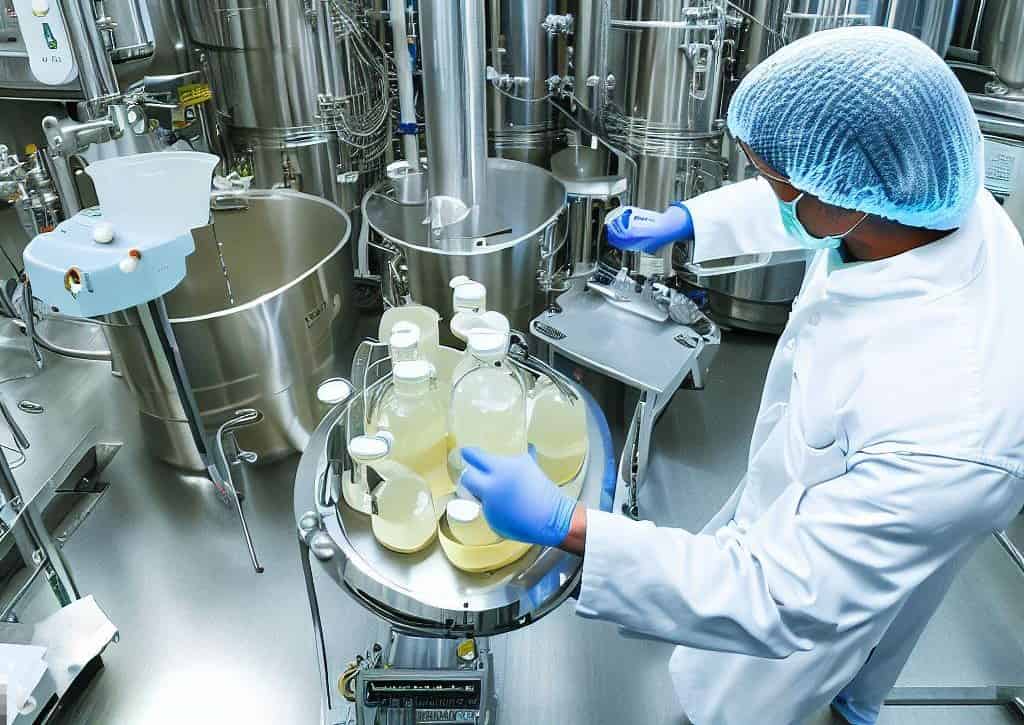
Climate change is impacting the stability of our food system. At the same time, the global population keeps growing, while the poorest areas of the world don’t have access to enough food. Precision fermentation might help address these problems, as it can ensure food stability without needing thousands of hectares of land to be consumed. But first, let’s take a step back and explain what precision and fermentation mean.
What’s meant by precision?
Precision comes from precision biology. This discipline is merging information technologies – such as AI and machine learning – with biotechnologies – genetic and metabolic engineering, to name a few. The coming together of these two branches allows for engineering molecules and nanoparticles for drug delivery.
How about fermentation?
As you may know, fermentation is behind foods humankind has been eating for millennia, such as bread, wine, and cheese. During conventional fermentation, bacteria break down sugars – such as yeast or ethanol – to produce energy. Harnessing this process, we can enjoy pizza, yogurt, and champagne. Fermentation is also behind the production of vitamins, solvents, and medications.
What’s precision fermentation, then?
Precision fermentation (PF) brings conventional fermentation many steps further, combining it with the latest precision biology technologies. Scientists can program microbes to produce whatever molecules they want. Using precision biology, they can get the genetic information behind plant and animal proteins. Once they acquire this data, they can copy and paste genetic sequences – or create new ones from scratch – into microbes.
Microorganisms become proper factories, intaking specific inputs and producing the desired products. Simply put, animal and plant proteins can be replicated without herding cattle or planting thousands of hectares of land.
Precision fermentation is a biotechnology that re-engineers common microbes such as yeast to produce a protein or substance identical to those generally found in foods such as eggs, dairy, or sweeteners when fermented.
Precision fermentation can recreate proteins genetically identical to those found in nature. Other claimed benefits of precision fermentation include the following: it’s quicker and easy to scale because livestock requires weeks and months to grow — while fermented cells require hours; it can be implemented in any part of the world using local biomass sources; it has a lot of room for optimization; it is a familiar method for producing food.
Milk protein, animal fats, collagen, honey, and egg whites.
Traditional microbial fermentation uses intact live microorganisms to process foods. Precision fermentation happens using microbes designed ad hoc to generate a specific end product.
What products can be made out of precision fermentation?
Because of its high costs, PF stayed limited to the pharmaceutical industry, which used it to make human collagen. This is primarily used in skin rejuvenation products. As the costs of the ingredients are falling, PF will soon be used for replicating casein – the main milk’s protein.
What’s an example of a food company using precision fermentation?
The Every Company from California combines traditional fermentation with genetic coding to produce egg proteins. They 3D print the DNA sequence of proteins feeding it to a yeast, which, as it eats sugars, starts delivering the encoded protein.
German startup Formo is also using microorganisms to make cow-free cheese. Starting with copying animal cells’ protein code and pasting it to microbes – rewiring their DNA. Then, they load the microbes into fermentation tanks, adding plant-based fats to create a milky broth, the basis for making their cheese. They expect to launch their cheese by 2023.
What are the advantages of precision fermentation?
PF cuts water and greenhouse emissions involved in food production – producing a kilogram of cheese emits 23.88 kg of CO₂ equivalent and needs 5,605 liters of freshwater. Furthermore, it also curtails production times. While it takes months to harvest vegetables and years to get meat, fermentation significantly speeds up processes. Given that scientists have full control over food making, precision fermentation would allow for higher-quality products.
What are the disadvantages?
The main concerns surrounding precision fermentation are regulatory and safety ones. The pharmaceutical industry requires meticulous tests to be passed before a product enters the market, while it isn’t so in the food industry. Most importantly, societal and ethical considerations arise regarding using genetically modified organisms for food production.
Overall, greater transparency on how these techniques are performed, the inputs and outputs generated, and the impact on consumer prices still need to be established.
What are the trends?
According to the think tank RethinkX, the cost of precision fermentation will keep falling throughout the 2020s as the ingredients needed will cost less. The research institute expects “proteins made by precision fermentation to be cost competitive with comparable proteins by 2025.” In addition, they foresee a fall in demand for cow products by 70 percent by 2030. Research and Markets forecasts the precision fermentation market to reach a $ 36.3 billion value by 2030 – from a $ 1.6 billion value in 2022.






